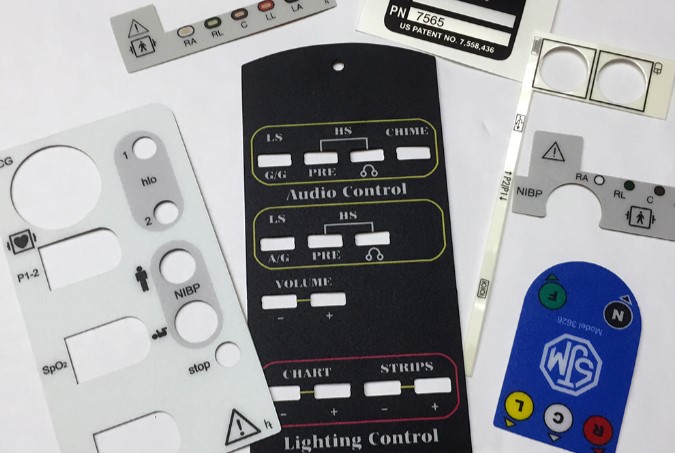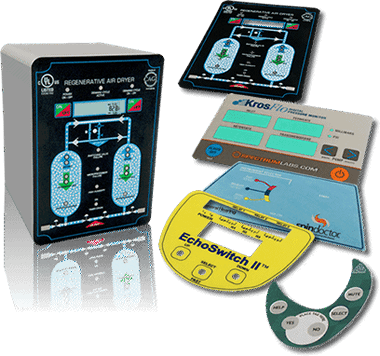How to Pick the Most Suitable Graphic Overlays for Different Uses
How to Pick the Most Suitable Graphic Overlays for Different Uses
Blog Article
Recognizing Just How Graphic Overlays Work to Enhance Your Imaginative Tasks
Graphic overlays serve as a crucial part in the world of imaginative tasks, enhancing both aesthetic communication and audience involvement. The effective assimilation of these overlays requires cautious factor to consider of layout principles and purposes.
What Are Graphic Overlays?
Graphic overlays are visual components that are put on top of a base picture or interface to improve interaction and customer experience. They serve various functions, including providing extra information, assisting customer interaction, and enhancing visual charm. Usual applications of graphic overlays can be located in digital user interfaces, advertising and marketing, and educational products.

Graphic overlays are usually produced using layout software application, permitting designers to control dimension, shade, and transparency to attain the desired impact. They can be fixed or dynamic, with computer animations that attract the customer's eye and enhance engagement. The calculated use visuals overlays not just enhances aesthetic hierarchy yet additionally help in providing a clear and systematic message. As such, comprehending just how to properly implement visuals overlays is important for developers intending to raise their creative projects.

Benefits of Using Graphic Overlays
Using graphic overlays can significantly enhance the efficiency of aesthetic interaction across various mediums. One of the main advantages is the capacity to communicate complicated information succinctly. By layering graphics, message, and images, overlays help with the discussion of data in a more digestible layout, making it simpler for target markets to realize key ideas promptly.
Furthermore, graphic overlays can enhance aesthetic charm, drawing attention to particular aspects within a design. This is especially helpful in marketing and advertising, where capturing the customer's rate of interest is extremely important. The tactical use of colors, shapes, and typography in overlays can produce a appealing and cohesive aesthetic story, boosting brand recognition.
In addition, visuals overlays supply adaptability in design. They permit creators to adjust content for various platforms without starting from scratch, ensuring consistency throughout different channels. This adaptability is crucial in today's electronic landscape, where web content must be enhanced for diverse gadgets and styles.
Sorts Of Graphic Overlays
When thinking about the various kinds of graphic overlays, it is vital to recognize their varied applications across different industries. Graphic overlays can be classified mainly right into 3 kinds: practical, decorative, and educational.
Useful overlays are made to boost the functionality of a product. Generally found in digital gadgets, these overlays often supply tactile comments via elevated buttons or textured surface areas, improving customer interaction. They can likewise act as a protective layer, safeguarding the underlying elements from wear and tear.
Ornamental overlays concentrate on visual enhancement, permitting brands to share their identity with dynamic designs and personalized graphics. These overlays are prevalent in product packaging, advertising site and marketing, and point-of-sale products, where visual charm is crucial for drawing in clients.
Informational overlays, on the other hand, are used to share essential data or instructions. They can be seen in applications such as signage, individual guidebooks, and instructional graphics, where clarity and readability are paramount.
Each sort of graphic overlay serves a distinct objective, contributing to the total effectiveness of creative projects while dealing with certain demands within different industries. Understanding these distinctions is crucial for picking the best overlay for your project.
Ideal Practices for Execution
To make sure the successful implementation of visuals overlays, it is crucial to develop a clear understanding of the project's goals and the particular needs of the end-users. Begin by performing thorough study to identify the target market and their preferences, as this will educate design selections and performance.
Next, produce a thorough plan that describes the overlay's layout, purpose, and combination process. This strategy should consist of individual interface factors to consider, making certain that overlays improve instead than obstruct the customer experience - Graphic Overlays. Preserve and take into consideration the aesthetic pecking order consistency in layout aspects, such as color schemes, icons, and font styles, to promote brand name coherence
Checking is important; gather comments from a representative sample of users to visit the website identify potential issues and locations for enhancement. Iterate on the style based on user input and performance data. Furthermore, make certain compatibility throughout various tools and platforms to make the most of accessibility.
Tools for Developing Overlays
Developing effective graphic overlays needs the right tools to translate style principles into useful applications. Different software and platforms are offered, each tailored to particular needs and skill levels.
Adobe Photoshop and Illustrator are market standards, using extensive capabilities for creating and controling overlays. These tools provide sophisticated functions such as layer administration, mixing settings, and vector graphics, making it possible for developers to develop high-grade and intricate overlays.
For those looking for a much more user-friendly technique, Canva and Figma are exceptional choices (Graphic Overlays). Canva's user-friendly interface enables individuals to develop overlays rapidly using pre-designed layouts, while Figma assists in collaborative style in real-time, making it perfect get redirected here for teams
Furthermore, open-source options like GIMP and Inkscape provide durable capabilities without the linked prices of proprietary software program. These devices enable versatility in layout and can fit numerous data formats, ensuring compatibility throughout different systems.

Final Thought
Finally, graphic overlays serve as effective devices for enhancing creative jobs by giving aesthetic clarity, visual allure, and brand uniformity. Their varied applications, varying from practical to attractive, highlight their flexibility in interaction. Following finest techniques and making use of appropriate devices ensures efficient implementation and maximizes the effect of overlays. By understanding the fundamental principles and advantages linked with visuals overlays, makers can significantly boost the quality and effectiveness of their visual interactions.
Graphic overlays serve as a critical part in the world of creative jobs, enhancing both aesthetic interaction and target market involvement.Graphic overlays are usually produced using style software application, allowing developers to adjust openness, shade, and size to attain the preferred impact.Moreover, visuals overlays can enhance aesthetic allure, drawing focus to particular components within a style.In addition, visuals overlays give versatility in layout.In final thought, graphic overlays offer as effective devices for boosting creative jobs by giving visual quality, aesthetic allure, and brand name consistency.
Report this page